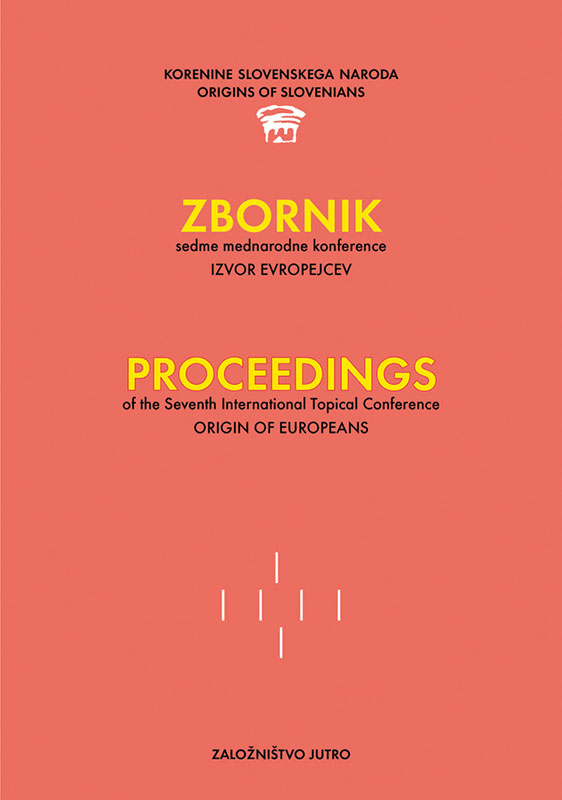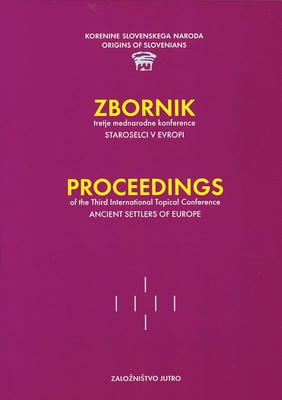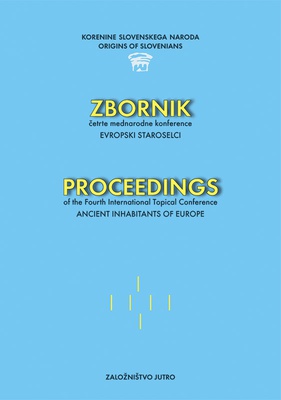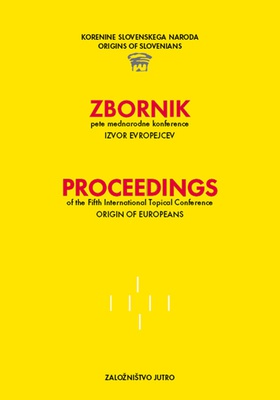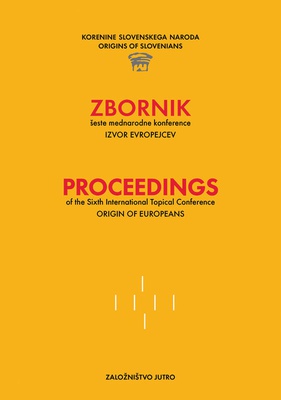SKUPINE KNJIG
(VIII.) ZBORNIK KONFERENCE IZVOR SLOVENCEV (2009)
- Velikost:
- 16,5 x 23,5 cm
- Tisk:
- enobarvni
- Število strani:
- 208
- Vezava:
- broširano
- ISBN:
- 9789616746304
- Prodajna koda:
- 8028
- Cena:
- 19,50 €
- Akcijska cena:
- 10,00 €
Pričujoči sestavki kažejo na večinski izvor srednjeevropskih zemljepisnih imen iz slovanskih jezikovnih korenin, kar opozarja na prvobitnost slovansko govorečih ljudstev na teh območjih. Značilne zemljepisne oblike so poimenovali staroselci, ki so jim bila predvsem imena rek in gora kažipoti pri njihovih trgovskih poteh. Poimenovanja izvirajo najkasneje iz dobe premika na sever po otoplitvi po zadnji ledeni dobi v 6. do 5. tisočletju ali pomiku proti jugu po močni kasnejši ohladitvi v 2. tisočletju pr. Kr.
Sestavki o predantičnih napisih razumljivih s pomočjo slovanskih jezikovnih osnov pa opozarjajo na dosedanje napačno razumevanje zahodnoevropskih jezikoslovcev, ki v teh napisih berejo predvsem poljubna imena. Ob tem upoštevajo latinske končnice, ki pa niso dale ustreznih rezultatov in se po količinski analizi ne skladajo z latinščino kot izbranim jezikom razumevanja. Značilnost njihove obravnave je odsotnost analiz značilnosti tedanjih napisov, tako po pogostosti črk kot korenov in besednih končnic, v tedanjih narečnih govorih.
Prispevki o venetskih, retijskih, frigijskih in trakijskih napisih upoštevajo korensko osnovo, ki je razvidna iz Jezikovnih in izvornih slovarjev, upoštevajo pa tudi statistično vrednotenje značilnih jezikovnih pojavov. Kot bistveno značilnost upoštevajo narečnost tedanjih govorov, ki niso brli poenoteni v obliki sedanjih knjižnih jezikov in dosedaj še niso strokovno ovrednoteni. Delitev zvezno pisanih besedil temelji na korenskih osnovah in šele dovolj dobra delitev teh napisov omogoča določitev narečnosti. Šele to je osnova za določitev narečnih končnic, ki predstavljajo slovnične podrobnosti.
Papers published in present Proceedings show that the majority of territorial names in Central Europe originates in Slavic language roots. This indicates the aborigine status of Slavic speaking populations in this region. Typically, territorial characteristics were named by aborigines since they were very important for them. Especially names of rivers and mountains were useful way-marks on their commercial travelling. Naming originated at the latest in the time when they were advancing towards North during warming after the last glacial period, and the latest during their retraction towards South after strong cooling in the 2nd millennium BC.
Papers on pre-antique inscriptions understandable using Slavic language bases indicate their incorrect understanding by West European linguists, who see in these ancient inscriptions first of all some supposed names. As a criterion they use Latin endings that do not give suitable results and do not correspond in frequency analysis with Latin as the reference language. Characteristic for their deciphering is the absence of analysis of characteristics of these inscriptions, for example the frequency of sounds, roots and word endings in those ancient dialects.
Papers on Venetic, Rhaetic, Phrygian and Thracian inscriptions use the approach based on root bases, and they also consider statistical evaluation of language phenomena. As a basic characteristic they consider dialectal tongues that are not as uniformed as the present literary languages. Till now this fact wasn't taken into account by West European linguists. Dividing of continuous inscriptions is based in present papers on roots and only suitable division of those texts makes possible the analysis of dialects. Only after these steps it is possible to determine dialectal endings as a base for grammatical details.
